

A friend of mine recently asked me to come over and give her some advice about her garden. As we chatted about this and that, she started absentmindedly weeding and was about to pluck out a few seedlings, when I cautioned her: white wood aster! You want to let that grow!
I was quite pleased with myself. A couple of years ago, I wouldn’t have known the difference, but someone else pointed out the white wood aster or Eurybia divaricata growing wild in my garden, and, ever since, I glory in the lacy show of white that crawls arounds the “woods” in the late summer and early fall.
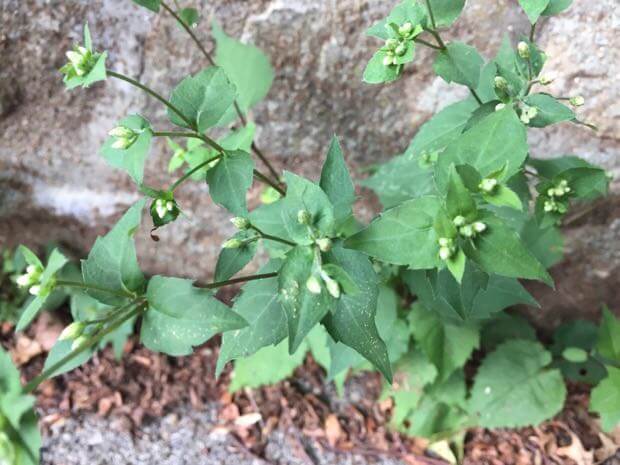
The fact that I didn’t plant these asters, nor, as far as I know, did any of my predecessors, makes them all the more precious to me.
“Right plant for the right place” is one of those mantras you’ll hear if you’re learning about garden design. And there’s certainly a pleasure in seeing plants flourish in a spot you’ve chosen for them. But nothing quite matches seeing a lovely aster or fern emerge from that hidden seed bank of flora that has lived in this place for hundreds, even thousands of years.
These “wild natives” are also great for lazy gardeners like me. Not to mention free!
So, in anticipation of the second episode of my podcast – which will feature landscape architect Carolyn Summers – I offer this piece of advice: learn to encourage “the plant that wants to be here,” to borrow Larry Weaner’s phrase.
In other words:
- Learn to recognize the native plants that are already growing in your garden (or trying to).
- Weed the plants around them that you don’t want (non-native, especially invasive species), thereby leaving room for the volunteer native plants to thrive.
Here are a few of the native plants you might find in your garden if you live in my neck of the woods (i.e. New York State). If you don’t live near me, contact a native plant center near you or a well-seasoned gardener to find out more about what native plants might pop up in your backyard.
Common blue violet / Viola sororia
These lovely heart-shaped creatures arrive in the spring and make our lawns so much more cheerful, at least until they get mowed down.
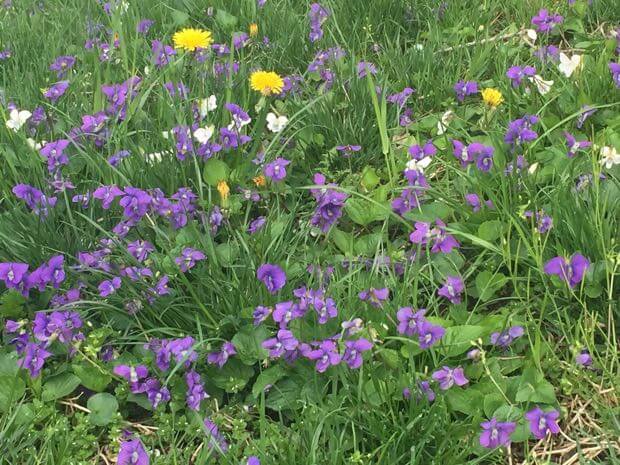
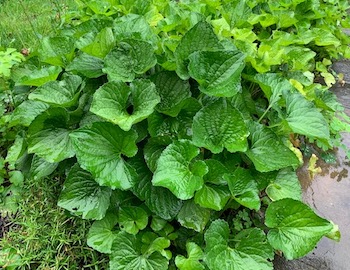
Encourage them where you can and you’ll be supporting Fritillary butterflies that use violets as their host plant. If you let them grow to maturity, you’ll get beautiful blossoms in the spring and the leaves will develop into an attractive mound that keeps its color into the fall. In late summer, a hidden treasure will form: the tripartate seed pods that look like miniature, black corn on the cob. I recommend you find a child to help you explode them and send them hither and yon.
Daisy Fleabane / Erigeron strigosus and Erigeron annuus
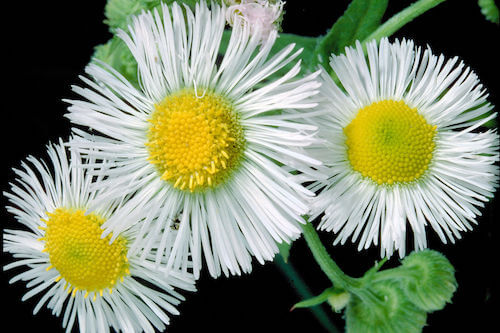
I’ll confess I get the two fleabanes mixed up. They’re very similar annuals or biennials and quite common. In the aster family, they bloom in spring with white or pinkish flowers. I find them especially delicious in masses, mixed in with grass. They are a good source of early nectar for bees and butterflies. This website has good pictures for identifying the plant early on.
Heart-Leaved Aster/ Symphyotrichum cordifolius

I love this plant. Okay, I love all asters but look at this dizzying burst of flowers that appeared with no coaxing (I merely had to let it grow). Once you learn to identify an aster leaf (whichever kind) it will become second nature. The Peterson guide to Wildflowers of Northeastern/North-Central North America describes the leaves of heart-leaved aster as “sharp-toothed, broadly heart-shaped, often deeply notched at base.”
Goldenrod
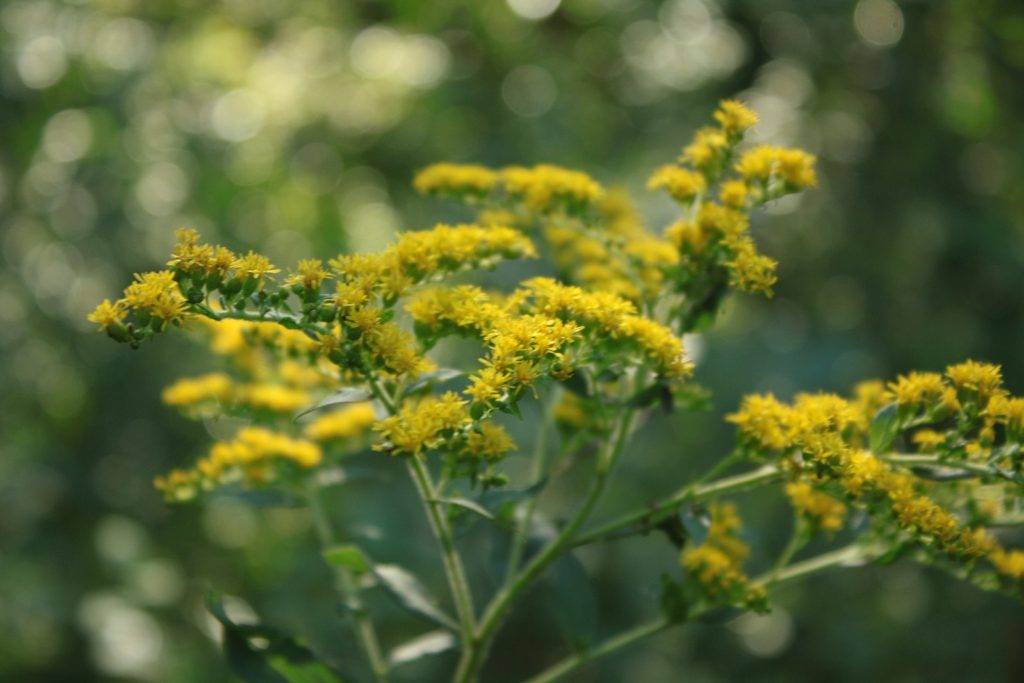
These lovely fall beauties that you still see scattered along the roadways have long been falsely accused of causing seasonal allergies. In fact, goldenrod’s pollen isn’t even airborne (the real culprit is ragweed). Moreover, goldenrod comes up as the #1 keystone genera when I search my zip code on the National Wildlife Federation’s Native Plant Finder. It supports a whopping 138 species of butterflies and moths! So, if you have it in your garden, let it grow!
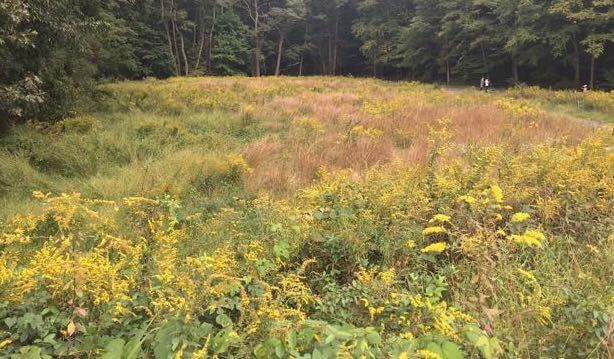
White Snakeroot / Ageratina altissima
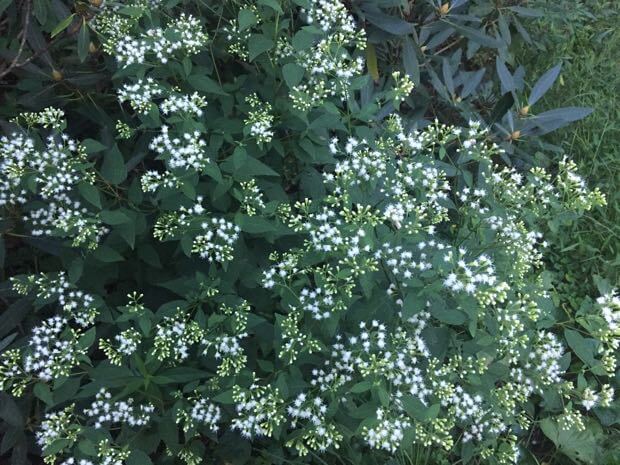
Another one that popped up in my garden. I find White Snakeroot quite pretty but don’t feed it to your cows or, presumably, other animals (“The common name of this species derives from the erroneous belief among early settlers that the bitter rhizomes were beneficial in the treatment of snakebites. In fact, the foliage and rhizomes are highly toxic, causing fatalities from ‘Milk Sickness’ because the toxins can pass through the milk of dairy cattle to humans.”). This site is good for pictures.
Virginia creeper/ Parthenocissus quinquefolia
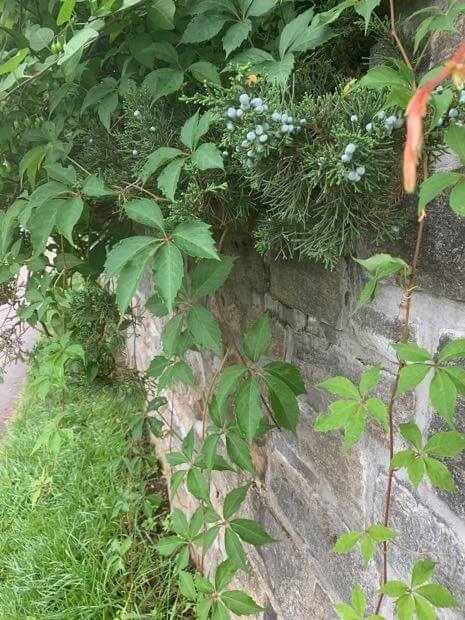
Sometimes mistaken for poison ivy, the leaf shape of Virginia creeper is quite distinctive. And it has that beautiful rich red color in the fall. It looks lovely on fences and growing up trees and won’t harm them, by contrast with many of the invasive vines.
There are many more wild natives, including native ferns, Dutchman’s breeches, common milkweed, mountain laurel and, of course, the many native trees.
To learn about gardening with natives from someone who actually knows what she’s doing, you’ll have to listen to my podcast episode with Carolyn Summers. Subscribe to the podcast to get it as soon as it’s available!
1 comment on “Wild Natives”
Comments are closed.
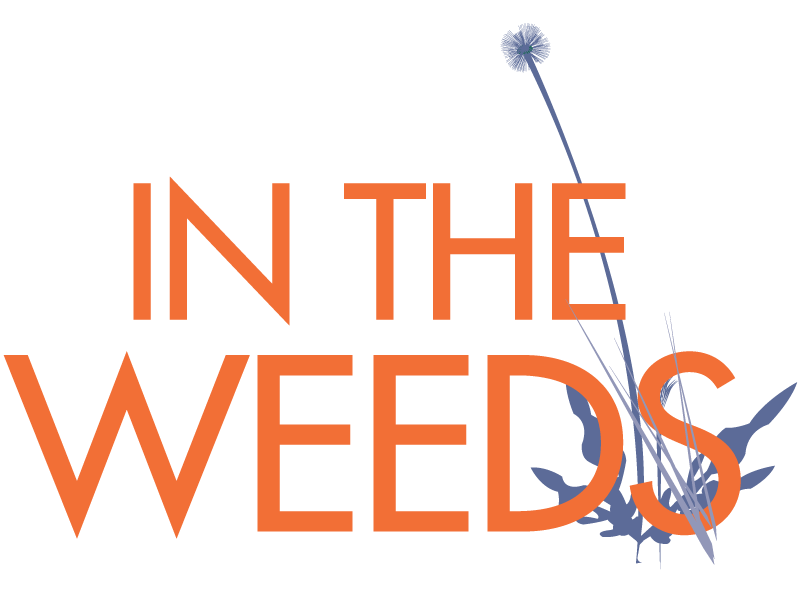
I love the wild violets!
The daisy fleabane really loves our elementary school grounds!